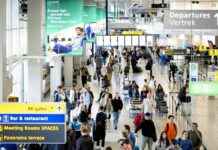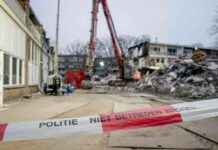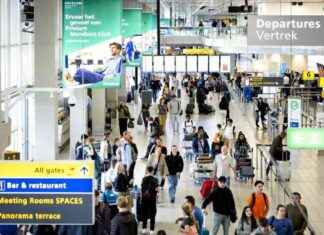Amidst the ashes, only corrugated roofs, support beams, scattered kitchen utensils remain… The province of Sagaing is suffering from some of the most brutal civil clashes in the country.
Rare images obtained by AFP show a region dominated by violence and a heavy presence of the army, pro-military militias and anti-coup fighters.
Internet access is regularly cut off.
Junta troops wreaked havoc in late August in the village of Tharyarkone, about 100 kilometers west of Mandalay, Burma’s second city, said Win Soe, one of the residents.
“On their way back to their camp, soldiers came to our village,” he said.
– “Just for the purpose of destroying” –
“There had been no fighting around here and they just came with the aim of destroying,” he added. “They burned down 60 houses in our village.”
A dozen young men, some in combat fatigues, football socks and sneakers on their feet, others in shorts and sandals, roam what remains of the streets of the town.
The unit is part of a local “People’s Defense Force” (PDF), dozens of which have formed in Sagaing and across the country to fight the army which in February 2021 overthrew the elected civilian government of ‘Aung San Suu Kyi.
Often armed only with their knowledge of the terrain and homemade rifles, some of these groups have surprised the military with their effectiveness, according to some analysts.
In response, the junta has launched offensives that human rights groups say include the destruction of villages, mass extrajudicial executions and airstrikes on civilians.
In May, the agency that coordinates UN humanitarian aid estimated that more than 12,000 civilian facilities had been burned or destroyed since the coup.
The army accuses the PDFs, which it calls “terrorists”, of being behind the fires and says they have killed hundreds of people, including Buddhist monks, teachers and healthcare workers.
– One million displaced people –
According to the United Nations, the violence that followed the coup brought the number of displaced people in Burma to more than one million.
They join those who have been driven from their homes by long-running conflicts in ethnic border areas.
The region of Sagaing, where mainly Bamar people live and a traditional breeding ground for the army, has seen more than half a million people displaced since the coup, according to the UN.
Even in villages that escape the fires, residents say they live in fear of military violence.
“When the soldiers came to our village, we hid behind some shrubs, but my son was in poor health and could only hide nearby,” said San Nwae, from a village near Tharyarkone.
“The soldiers found him and beat him to death. From my hiding place, I heard someone being killed.”
“When they left the village…I came out of hiding and realized it was my son.”
Led by the UN and the Association of Southeast Asian Nations (ASEAN), diplomatic efforts to extricate Burma from the bloody stalemate have made little progress.
“We have been fighting the military for a year, but we don’t have enough weapons,” a PDF member said.
He admitted that his group of around 20 fighters is often unable to “keep the military at bay for very long”.
“When the soldiers come to our village, we warn the inhabitants to flee, and we evacuate some of them,” he said.
“If the soldiers arrest the villagers, most of them will be killed.”








